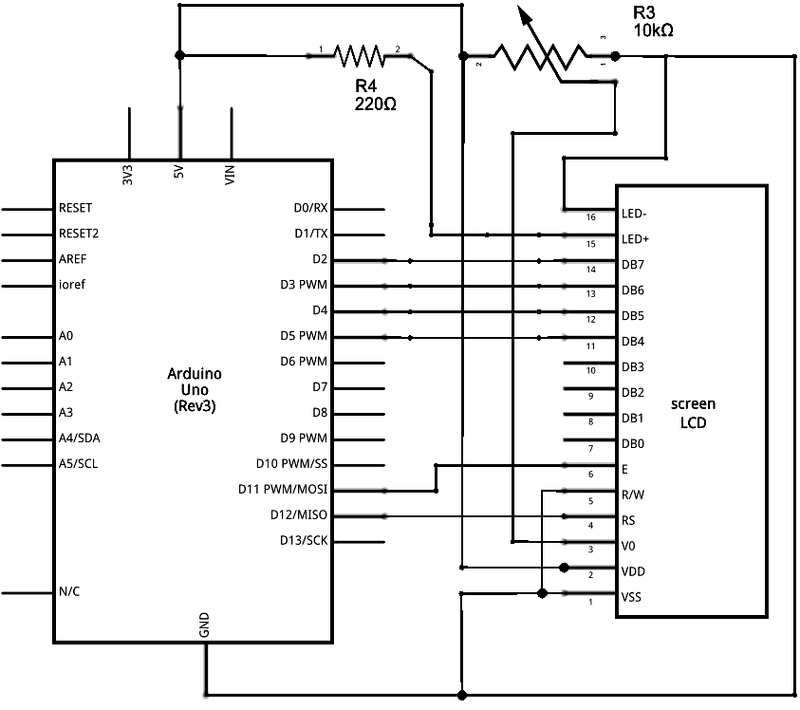

- Arduino lcd library examples how to#
- Arduino lcd library examples Bluetooth#

In the diagram above pin 15 (tha anode of the backlight) is connected to the 5v rail through a 220 Ohm current limiting resistor. Some LCDs do not have a backlight (pins 15 and 16 on the LCD). Here is a diagram of the connections (updated on June 8th, 2015): Updated: Arduino Uno controlling an LCD using a shift register. The Latch: Connect pin 12 “STCP” on the 74HC595 to Arduino pin 9. The SPI clock (SCK): Connect pin 11 “SHCP” on the 74HC595 to Arduino pin 13. The data bits (MOSI): Connect pin 14 “DS” on the 74HC595 to Arduino pin 11.
Arduino lcd library examples how to#
A byte is sent from the Arduino each clock cycle, which then tells the shift register how to set each of its 8 digital pins (high or low).Ĭonnections between the Arduino and the shift register:
The character LCD is now connected to the shift register pins, not directly to the Arduino. The MISO (Master In Slave Out) line is not needed because we are not going to read any data from the LCD. For this purpose we need the Data (MOSI), Clock (SLCK) and Latch (Slave Select) pins connected. The Arduino is the “Master” and the shift register is the “Slave”. The Arduino Uno communicates with the shift register using SPI. Step 1: Wiring the Arduino, the 74HC595 shift register and the LCD Using a shift register gives me 8 additional digital output pins (in the case of the 74HC595) at the cost of 3 Arduino digital pins (for one way communication from the Arduino to the shift register via SPI). In this case, I want to send data one way only – from the Arduino to the LCD. Fortunately, there is an alternative: add a 74HC595 shift register and take advantage of the Arduino SPI library. Here is how: The problem is that now I need to find another 6 digital pins to control the LCD itself. Gradually more interesting info like battery voltage and wheel encoder data can also be shown, as I get those components working. Arduino lcd library examples Bluetooth#
I decided to add it to my Bluetooth Controlled robot and display data from its two ultrasonic distance sensors (initially). Now that I got my recycled 40×2 character LCD working with Arduino, the next step is to get it to show something useful.






 0 kommentar(er)
0 kommentar(er)
